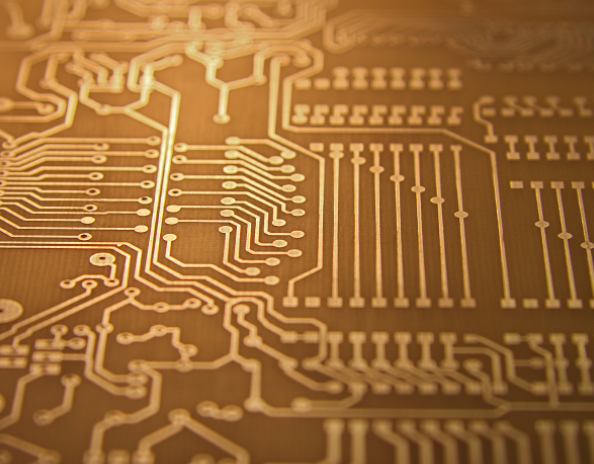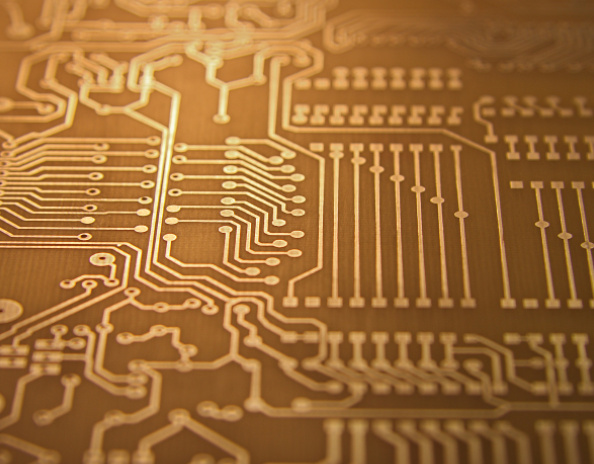
PCB Layout Strategy Required by A/D Converter
p> Analog to digital (A/D) converters have their origins in the analog paradigm With the development of the new design topology, this mode has evolved into a low-speed A digital advantage/D converter Although the/on-chip D converter is mainly analog to digital, the routing rules of PCBhave not changed Effective routing still requires critICal routing knowLEDge when routing designers design mixed signal circuits In this paper, the successive approximation method/D converter and Σ will be used- Δ/ Taking D converter as an example, the PCB layout strategy required by A/D converter is discussed
The successive approximation A/D converter has 8-bit, 10 bit, 12 bit, 16 bit and 18 bit resolution At first, the process and structure of these converters are bipolar, with R-2R resistor ladder Not long ago, however, these devices have migrated to CMOS processes using capacitive charge distribution topologies Clearly, this migration does not change the system cabling strategy of these converters The basic routing method is the same except for higher resolution devices For these devices, special care should be taken to prevent digital reverberation from the serial or parallel output interface of the converter As far as circuits and on-chip resources dedicated to different fields are concerned, analogy dominates successive approximation A/D converters Figure 1 is a block diagram/D converter of 12 bit CMOS successive approximation a
In this block diagram, the sample/hold, comparator, most of the digital to analog converter (DAC), and 12 bit successive approximation A/D converter are all analogical The rest of the circuit is digital Therefore, most of the energy and current required by the converter flows to the internal analog circuit The device only needs a SMAll digital current, which is used in D/A converter and digital interface These types of converters can have multiple ground and power connection pins Pin naMES are often misleading because analog and digital connections can be distinguished by pin numbers These digital bits are not used to describe the PCB connected to the system, but to determine how digital and analog currents flow out of the chip It makes sense to connect the power and ground pins on the same plane (like the analog plane)

For these devices, two grounding pins are usually from the chip: AGND and DGND The power supply has one pin When these chips are used for PCB routing, AGND and DGND should be connected to the analog grounding plane The analog and digital power supply pins shall also be connected to the analog power supply plane or at least the analog power rail, and appropriate bypass capacitors shall be used as close as possible to each power supply pin Due to the limitation of package pins, devices like MCP3201 only have one grounding pin and one positive power supply pin However, isolated grounding adds the possibility that the converter is good and repeatable For all these converters, the power strategy should be to connect all grounded, analog plane positive and negative power supply pins Furthermore, the "COM" pin or "IN" pin associated with the input signal should be grounded as close to the signal as possible For successive approximation with higher resolution, the A/D converters (16 - and 18 bit converters) need to pay extra attention to isolate the digital noise from the "quiet" analog converter and the power plane When connecting these devices to the microcontroller, the external digital buffer shall be used for noise free operation Although these types of successive approximation/D converters usually have an internal double buffer on the digital output side, the external buffer is used to further isolate analog circuits and digital bus noise in the converter
High Σ Δ/ Digital converter In the early days of this converter production, this paradigm shift prompted users to use PCB planes to isolate digital noise from analog noise SIMilar to successive approximation A/D converters, these types of/D converters may have multiple analog ground, digital ground, and power supply pins Digital or analog design engineers usually like to separate these pins and connect them to different planes However, this tendency is wrong, especially when you try to solve the serious noise problem of 16 bit to 24 bit devices For high resolution Σ- Δ/ The clock (internal or external) applied to the converter may be 10MHz or 20MHz The high frequency clock is used to switch the modulator and run the oversampling engine For these circuits: AGND and DGND pins are connected together on the same ground plane, such as/D converter in successive approximation A Moreover, the analog and digital power supply pins should be connected together on the same plane The requirements of analog and digital power planes are the same as those of high resolution successive approximation/D converter There must be a ground plane, which means at least a double-sided board On this double-sided board, the grounding plane shall cover at least 75% of the whole circuit board area The purpose of grounding plane layer is to reduce grounding impedance and inductive reactance, and to provide shielding against electromagnetic interaction (EMI) and radio frequency interaction (RFI) If the grounding plane side of the circuit board requires an internal connection trace, make the trace as short as possible and perpendicular to the grounding current loop
For low A/D converters, such as six -, eight -, or even 10 bit A/D converters, it is good not to separate analog and digital pins However, as your choice of converter and resolution increases, so do your cabling requirements High resolution successive approximation A/D converter and Σ- Δ/ The D converter needs to be directly connected to the low noise analog grounding and power plane of the PCB board
然后
联系
电话热线
13410863085Q Q

微信

- 邮箱








